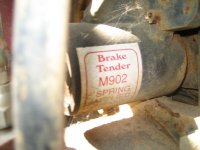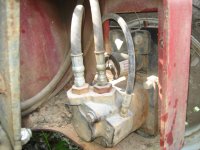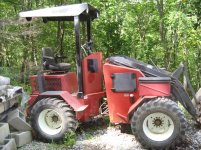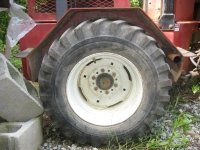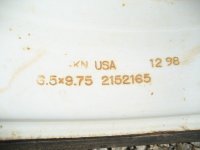One of you mentioned reinforcing the lift arms to be able to lift a heavier load, if I was considering doing that I would also consider reinforcing the mounting points for the lift arms. As far as the breaks on the tram motors has any one considered teeing into the pressure lines of the tram circuit and putting piloted check valves in the lines on both hoses going to the wheel motors, that way when you hit the tram pedal it would send pressure to the wheel units like always but also some of the pressure would go to the check valves to open them and it would tram as usual but if something interrupted the oil pressure to the wheel motors then the check valves would automatically close on both sides of the wheel unit trapping what oil that is in the wheel unit so that it can't get back to tank.... That blockage might not completely stop the wheels from turning because of wheel motor bypass but it would hinder the free wheeling that you were talking about and if there was no bypassing then it would stop the machine. I have seen check valves on lift cylinders that if a hose busted it would not let the load drop, but I wouldn't trust my life with a check valve holding a load up tp get under it to work I would properly block the load up first before getting under a load, likewise I only made these suggestions to give ideas on what might work. These suggestions may sound silly to you, if they do then disregard them.
